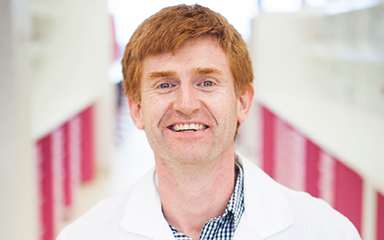
A team of researchers from the Harry Perkins Institute of Medical Research and The University of Western Australia have developed a new way to more accurately detect breast cancer in patients undergoing breast-conserving surgery.
The study, published today in Cancer Research, will significantly impact the way surgeons are able to detect microscopic traces of tumour that could previously not be detected by sight, touch or even X-ray imaging during surgery.
The team combined an imaging technique that uses light waves to generate three-dimensional images of tissue, optical coherence tomography, with one that produces three-dimensional maps of tissue elasticity, micro-elastography. Cancer cells are stiffer than benign tissue and by measuring the elasticity of the tissue, the team could more accurately detect cancer cells surrounding the area where the tumour was removed.
Professor Christobel Saunders from UWA’s School of Medicine said beyond surgeons’ native senses of sight and touch, X-rays were often used during surgery to detect tumours within the margins of the area being removed.
“While useful in some cases, this method can’t detect small microscopic traces of tumour that surgeons often miss,” she said.
“As a result, it is widely accepted that higher resolution intraoperative detection techniques are needed.”
The study assessed 90 patients undergoing surgical treatment for breast cancer. Following surgery, the two imaging techniques were used simultaneously to attempt to detect the presence of cancer within the surgical margins before they were submitted for standard pathological processing. The sensitivity and specificity was then calculated for both imaging methods.
The study showed that the micro-elastography technique developed by the research team was significantly more accurate than optical coherence tomography alone in detecting the presence of cancer cells within the surgical margins.
Lead researcher, Associate Professor Brendan Kennedy the Perkins BRITElab said that while numerous emerging imaging techniques have been proposed, such as optical coherence tomography, they have typically been demonstrated on gross tumour from mastectomy specimens that is often easy to detect with the naked eye, whilst his team has focussed on the more clinically-relevant and harder to detect case of tumour at the edges of breast-conserving surgery specimens.
“Despite living in the digital age, surgeons must routinely rely on their eyesight and sense of touch to determine if they have removed the entire tumour during breast-conserving surgery,” Professor Kennedy said.
“Due to lack of adequate tools, 20-30 per cent of patients must return for additional surgery, resulting in substantial physical and financial burdens and increased risk of complications.”
Professor Kennedy said the technique had the potential to significantly reduce re-excision rates in breast conserving surgery and remove the subjectivity that is inherent to the surgeon’s sense of touch.
“Our goal is to develop a handheld 3D tool to enable intraoperative imaging,” Professor Kennedy said.
Next, the team hope to perform the imaging in vivo during surgery immediately after the cancer has been removed to give surgeons a direct indication of whether any tumour has been missed.
